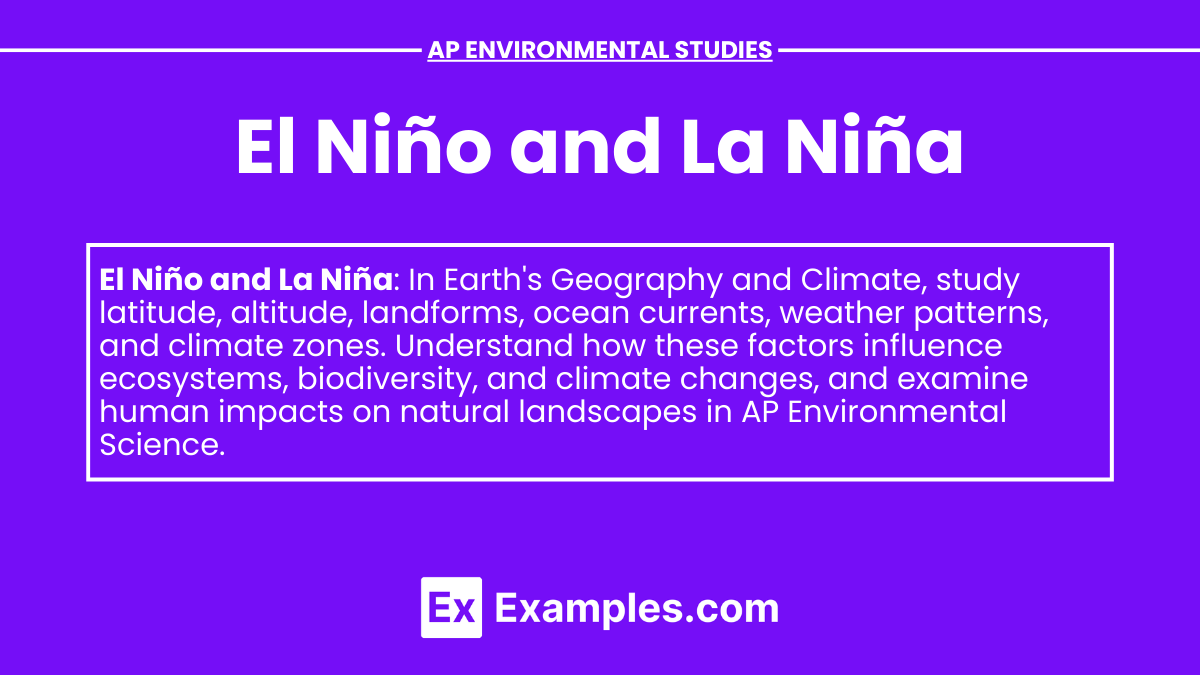El Niño and La Niña are critical phenomena in AP Environmental Science, impacting the biosphere, ecosystems, and biodiversity globally. These climatic events, part of the El Niño-Southern Oscillation (ENSO) cycle, alter ocean temperatures and atmospheric circulation patterns in the Pacific Ocean. El Niño, characterized by warmer sea surface temperatures, can lead to extreme weather events and disruptions in ecosystems worldwide. In contrast, La Niña, with cooler sea surface temperatures, influences climate patterns differently, affecting agriculture, water resources, and species distribution. Understanding these phenomena is crucial for assessing their environmental impacts and developing strategies to mitigate their effects on Earth’s natural systems.
Learning Objectives
El Niño and La Niña focus on understanding their effects on organisms, flora and fauna, as well as broader climate changes. Students study how these phenomena alter ocean temperatures and atmospheric circulation, impacting global weather patterns and ecosystems. They analyze the ecological consequences such as shifts in species distribution, agricultural productivity, and natural disasters. The curriculum emphasizes evaluating mitigation strategies and adaptation measures to enhance resilience against extreme weather events and sustain biodiversity in the face of changing climate dynamics.
El Niño and La Niña
El Niño and La Niña are climatic phenomena that occur in the Pacific Ocean and influence weather patterns globally. They are part of the El Niño-Southern Oscillation (ENSO) cycle, which impacts temperature, precipitation, and storm patterns around the world.
El Niño
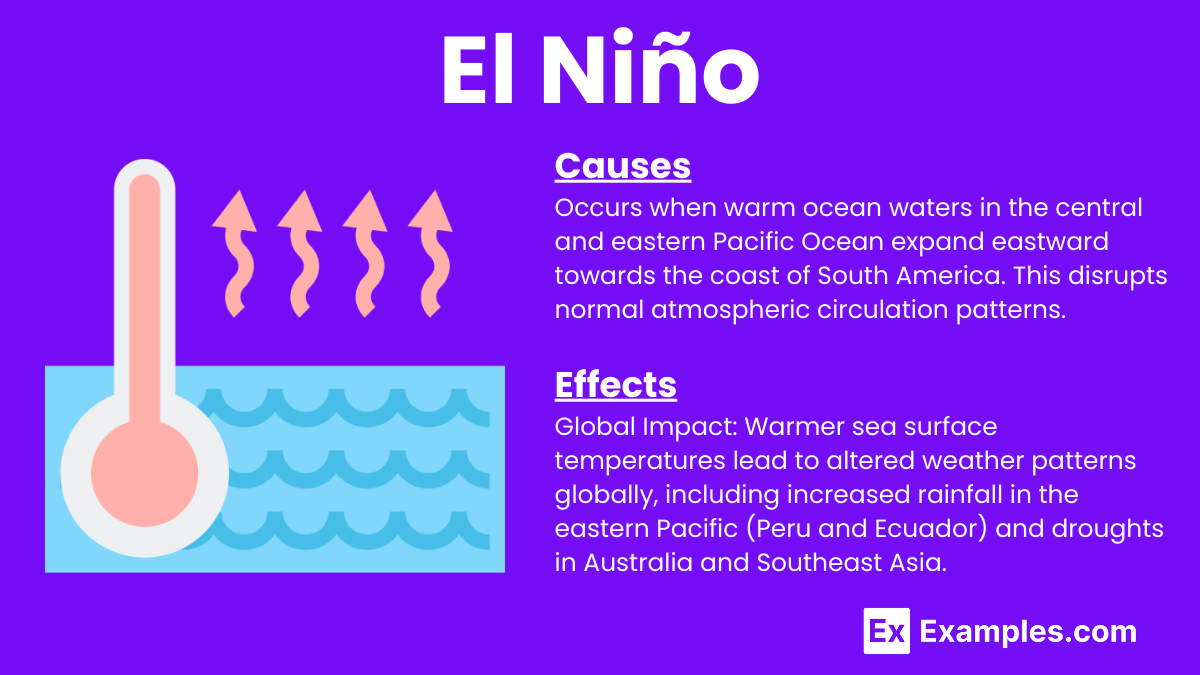
- Cause: Occurs when warm ocean waters in the central and eastern Pacific Ocean expand eastward towards the coast of South America. This disrupts normal atmospheric circulation patterns.
- Effects:
- Global Impact: Warmer sea surface temperatures lead to altered weather patterns globally, including increased rainfall in the eastern Pacific (Peru and Ecuador) and droughts in Australia and Southeast Asia.
- Weather Patterns: Changes in jet stream and atmospheric circulation affect storm tracks, leading to more frequent and intense storms in some regions and droughts in others.
- Environmental Impacts: Coral bleaching due to warmer waters, disruption of marine ecosystems and fisheries.
- Social and Economic Impacts: Crop failures, food shortages, increased disease risks, and economic losses due to extreme weather events.
La Niña
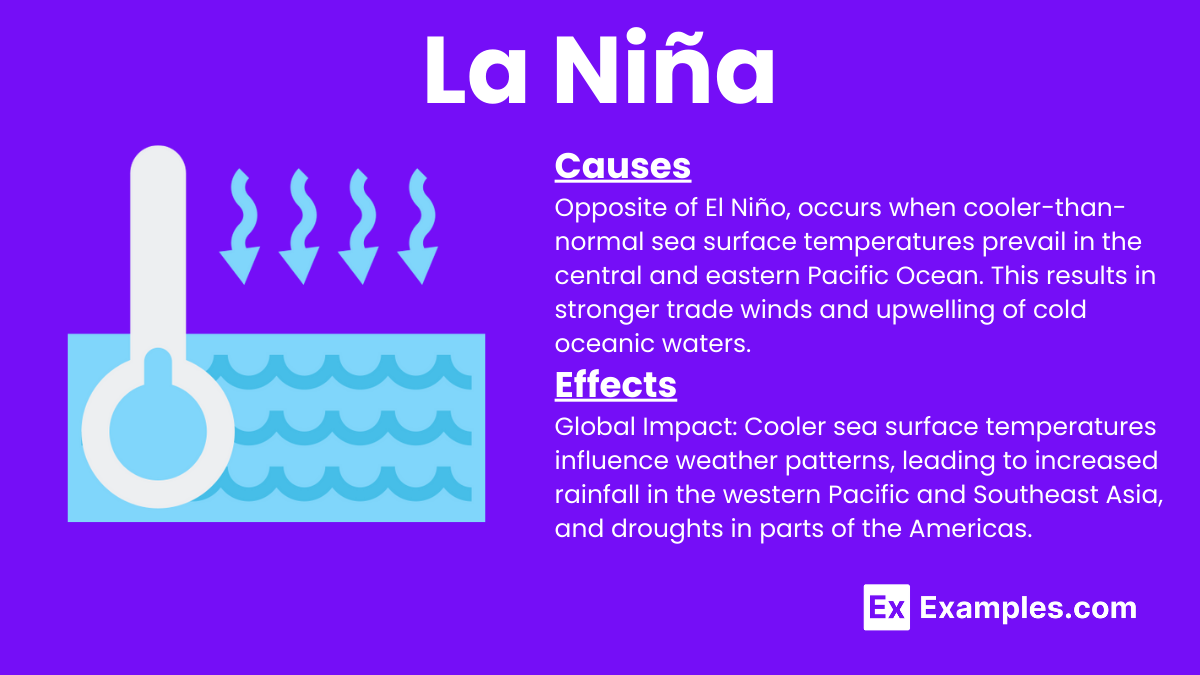
- Cause: Opposite of El Niño, occurs when cooler-than-normal sea surface temperatures prevail in the central and eastern Pacific Ocean. This results in stronger trade winds and upwelling of cold oceanic waters.
- Effects:
- Global Impact: Cooler sea surface temperatures influence weather patterns, leading to increased rainfall in the western Pacific and Southeast Asia, and droughts in parts of the Americas.
- Weather Patterns: Enhanced hurricane activity in the Atlantic Basin, increased precipitation in the western United States, and dry conditions in Australia and Indonesia.
- Environmental Impacts: Shifts in marine ecosystems, impacts on coral reefs and fisheries.
- Social and Economic Impacts: Agriculture and water resource management challenges due to variable rainfall patterns, impacts on food production and security.
Comparison and Interaction
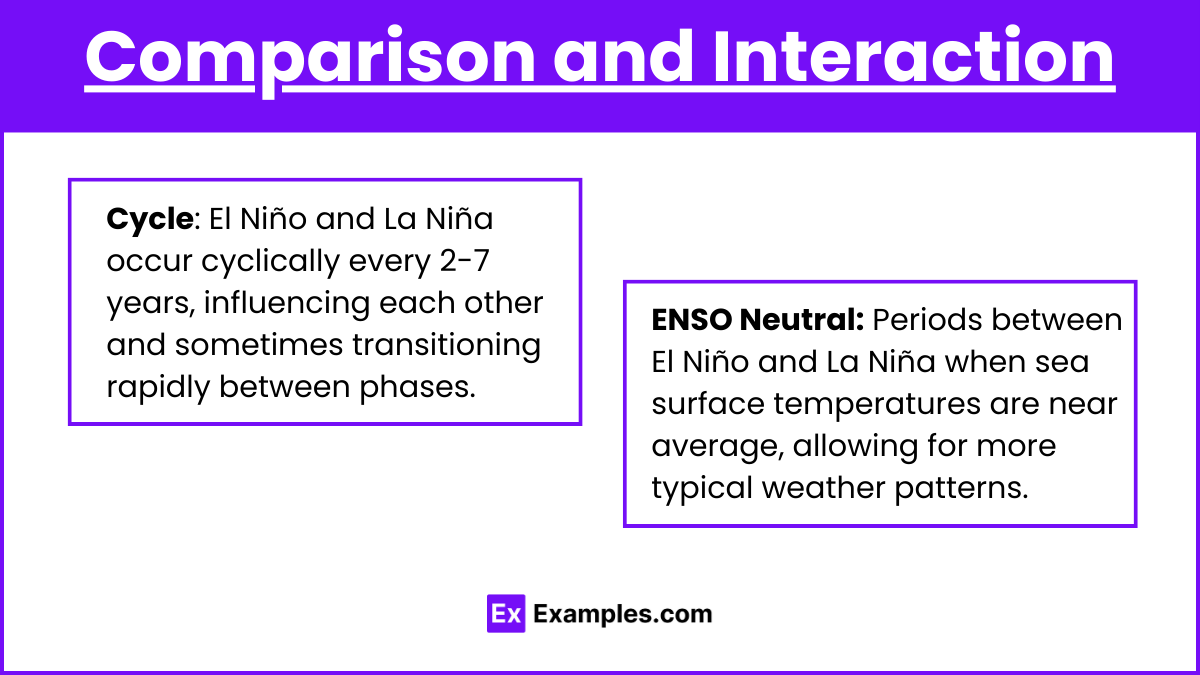
- Cycle: El Niño and La Niña occur cyclically every 2-7 years, influencing each other and sometimes transitioning rapidly between phases.
- ENSO Neutral: Periods between El Niño and La Niña when sea surface temperatures are near average, allowing for more typical weather patterns.
Predicting and Monitoring
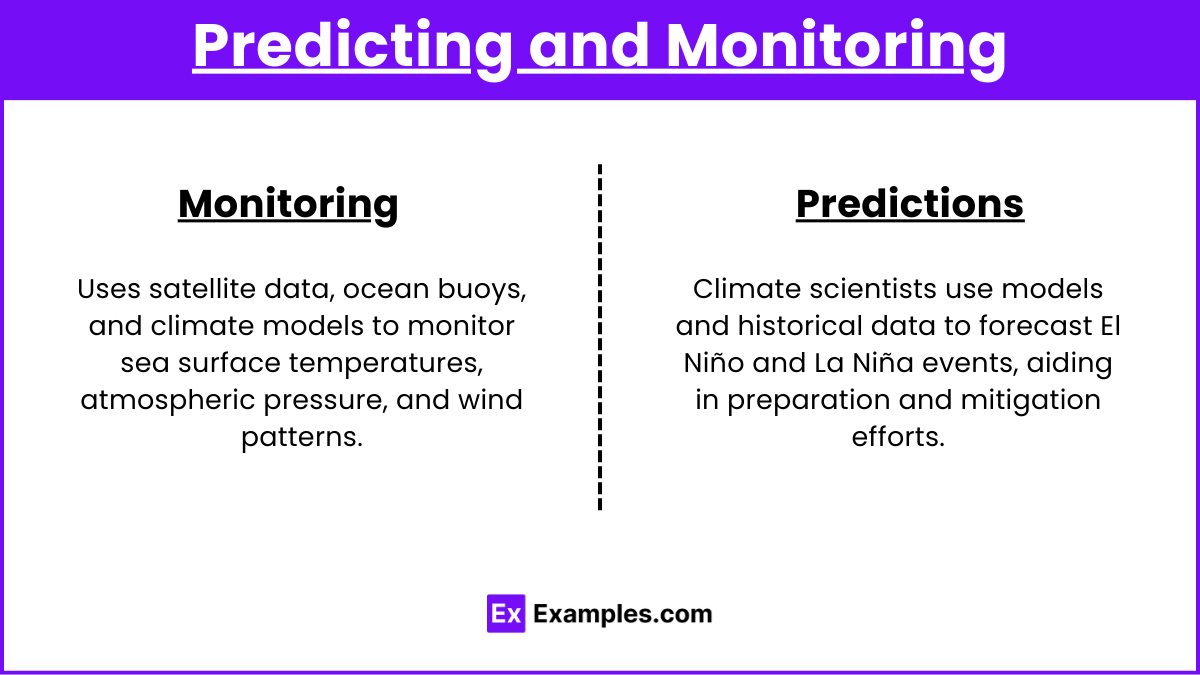
- Monitoring: Uses satellite data, ocean buoys, and climate models to monitor sea surface temperatures, atmospheric pressure, and wind patterns.
- Predictions: Climate scientists use models and historical data to forecast El Niño and La Niña events, aiding in preparation and mitigation efforts.
Implications for Policy and Adaptation
- Climate Resilience: Governments and communities develop strategies to mitigate and adapt to the impacts of El Niño and La Niña, including early warning systems, disaster preparedness, and sustainable water management practices.
- International Cooperation: Coordination among nations to address transboundary impacts of ENSO events on agriculture, fisheries, and disaster response.

